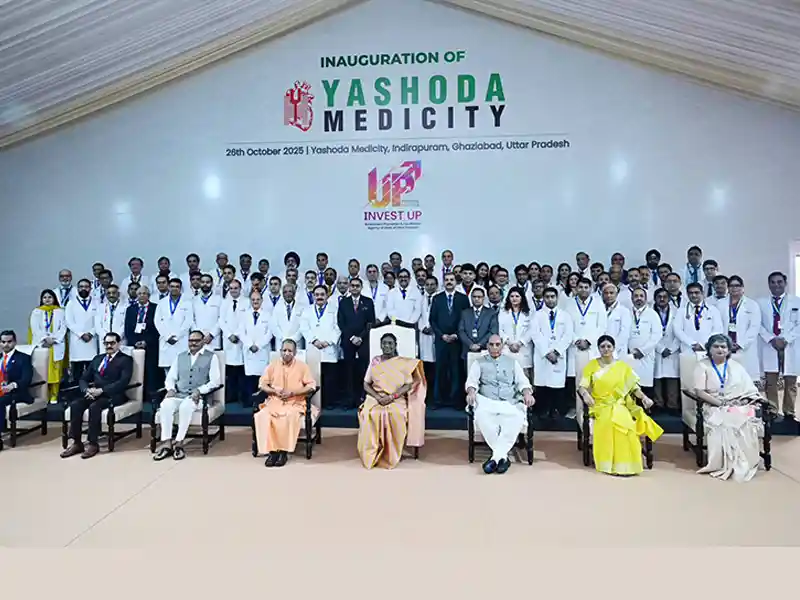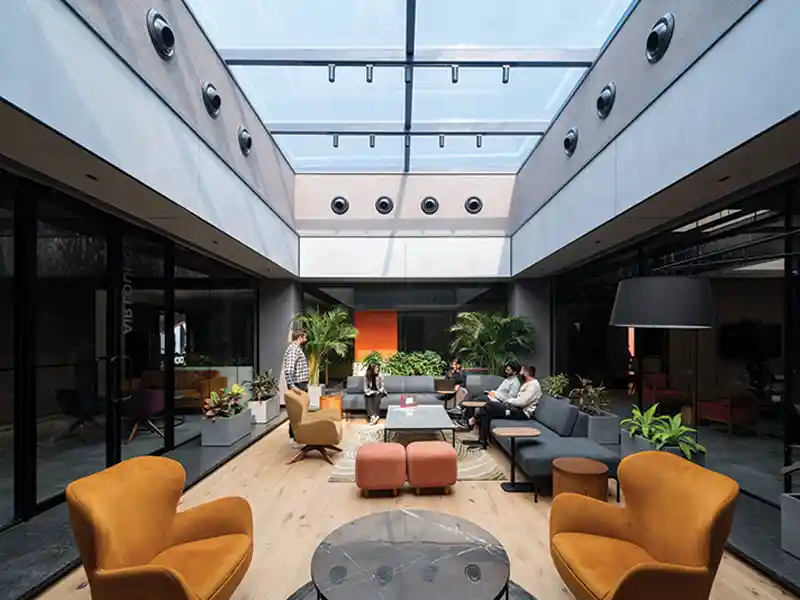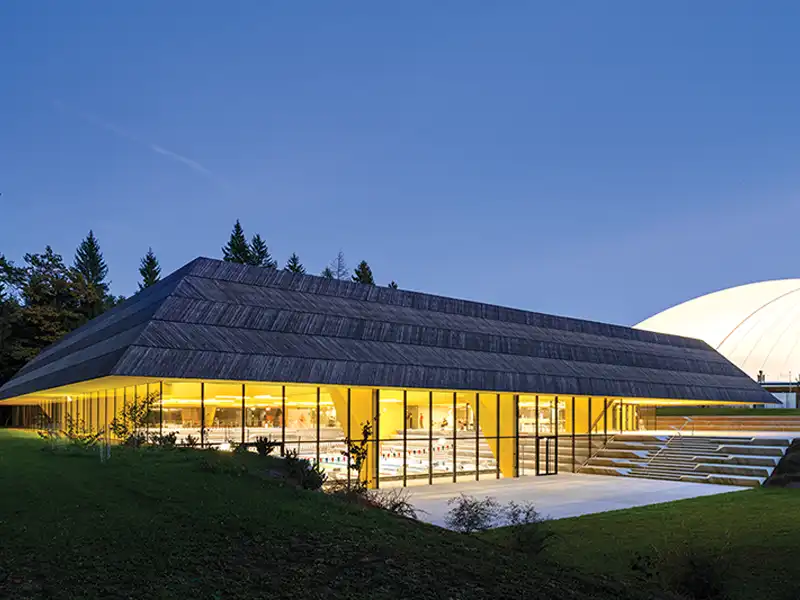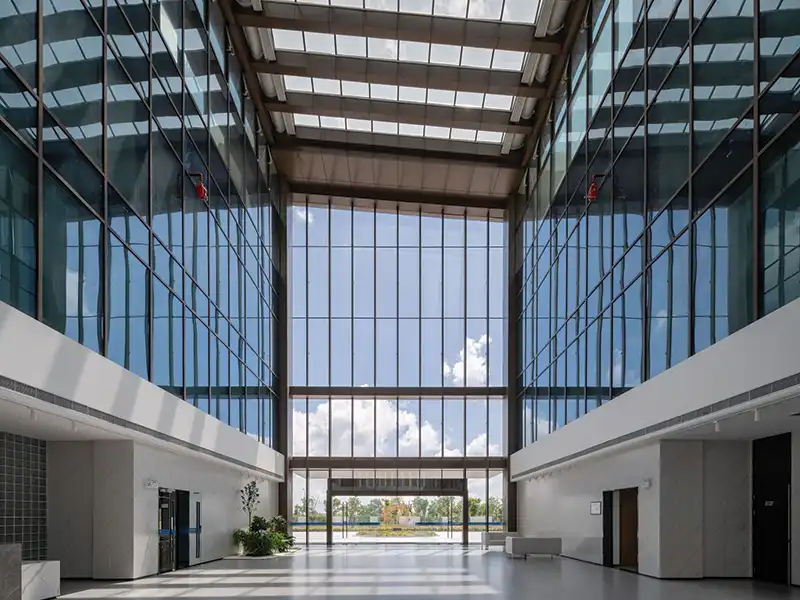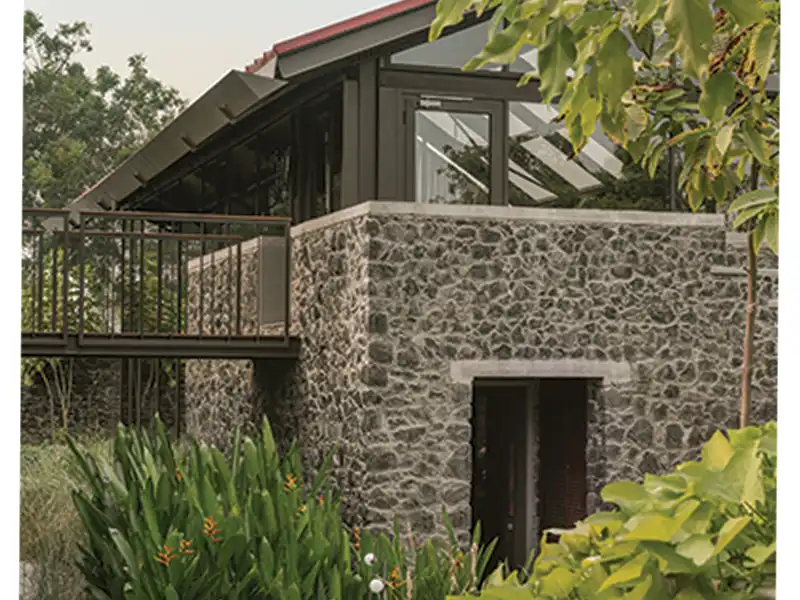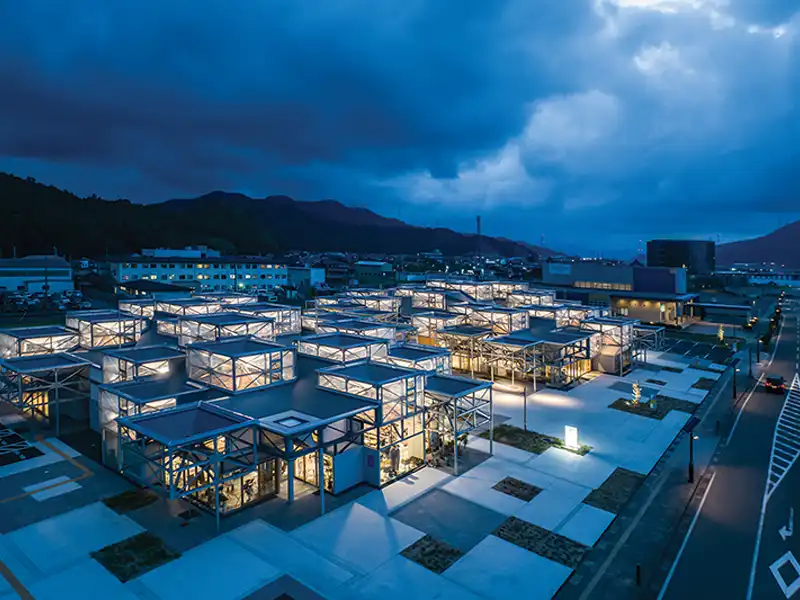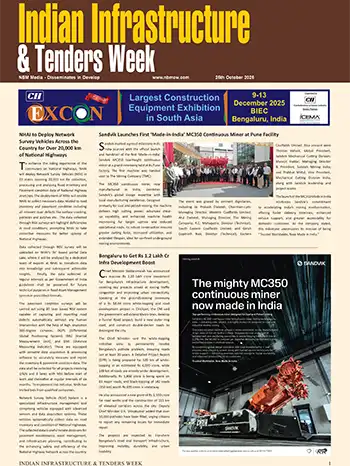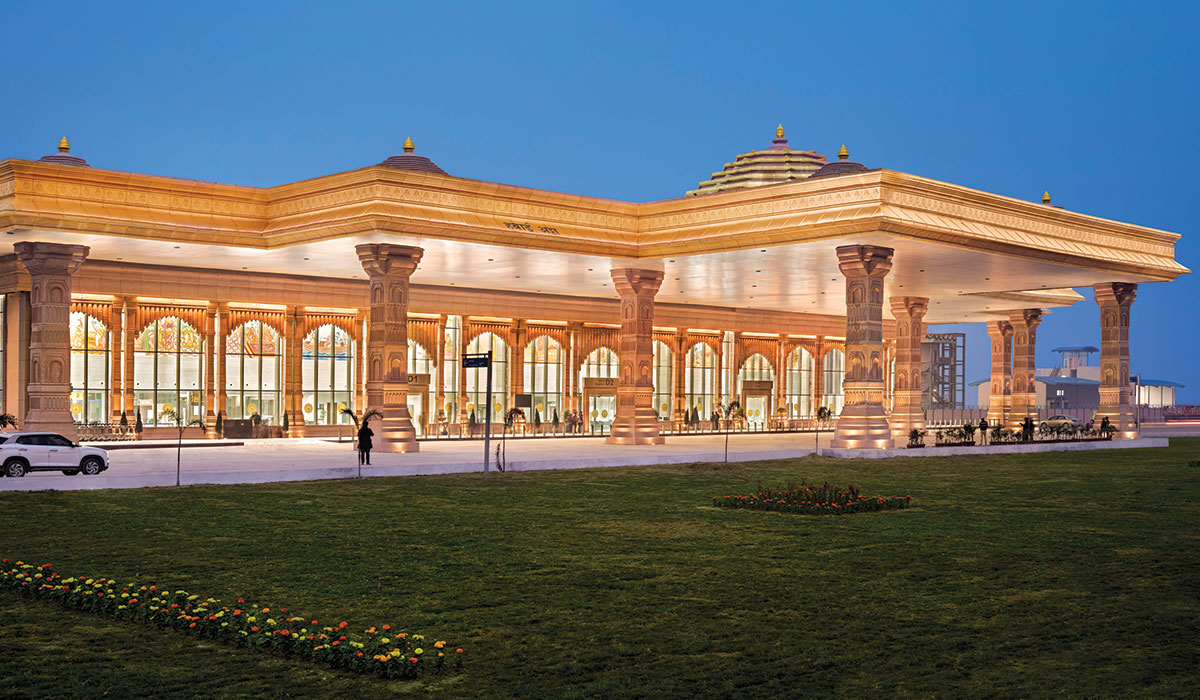
Fact File
Built-up area: 8000 sqmMaster plan area: 336.59 acres
Cost: Rs. 250 crores
Design Team: Vipul B. Varshneya, Harsh Varshneya, Khushboo Bansal, Anuj Varshneya, Manish Gupta, in collaboration with the Airport Authority of India (AAI) and their planning and design team.
Photography: Noughts And Crosses
In the heart of India, the newly unveiled Ayodhya Airport isn’t just a transportation hub; it’s a living testament to the nation’s cultural richness. Departing from the conventional glass box architecture, each facet of the airport, from its towering roof to the intricate columns, has a historical and spiritual significance. The Airport’s architecture weaves together history, tradition, sustainable practices, and mythological stories —a deliberate departure from minimalism and the coming together of cultural expression and modern innovation. It captures the essence of India’s vibrant history, fostering a revival of local artistry.

With its GRIHA 4-Star certification, the airport heralds a new era in environmentally conscious aviation along with modern advancements while providing a platform for traditional craftsmanship to thrive. It’s a harmonious integration of the old and the new, a beacon of cultural resurgence in modern India.
Using eco-conscious GRC materials, the design pioneers sustainable practices in aviation. Ornamental work, meticulously crafted in Glass Fiber Reinforced Concrete (GRC) after extensive research and technical precision, replaces traditional stone facades and significantly contributes to environmental sustainability, resulting in substantial carbon emission reduction.
Beyond being a transportation node, the Ayodhya Airport is a catalyst for change and growth. It emerges as a connectivity hub, poised to drive economic self-sufficiency, connect communities, foster cultural enrichment, and weave a narrative of empowerment for the entire region.
Harsh Varshneya, Principal Architect,
Vipul Varshneya, Founder, Director & Principal Architect, STHAPATI
The Ayodhya Airport is strategically located to facilitate travel for devotees and tourists. A two-storeyed structure, the Airport is adorned with elevational elements depicting the sacred city’s rich history. It integrates the Historic City’s heritage into the architecture. The building is inspired by the gradual elevation of the mandapas and the Nagara style of temple architecture prevalent in Northern India. At the main entrance, a grand stepped shikar stands tall, adorned with brass. This architectural masterpiece follows the Nagara style, outlined with scriptures, presenting a majestic and culturally rich welcome to the passengers. The city’s heritage and story unfold through intricate columns, each laden with profound symbolism. The mega columns supporting the terminal roof symbolise the Kandas of Ramayana, blending cultural richness into the airport’s architecture. The Khandika, symbolising impermanence, coexists with the Deva Gana Patta, embodying divine features.
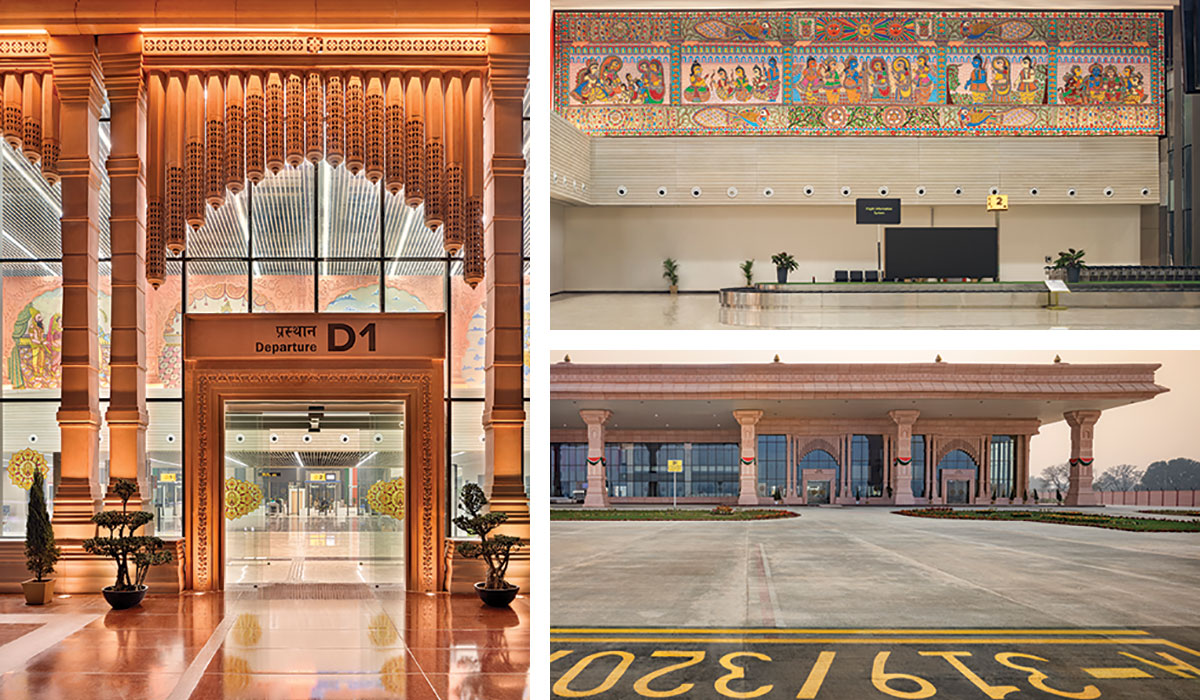
Every column narrates a story of dedication, courage, and spirituality, weaving the city’s essence into the very fabric of the airport. The ‘Toran dwars’ stand out remarkably, especially at eye level. These intricately adorned entrances serve as a nod to mythological references, creating a symbolic connection to the region’s rich heritage.
The Airport’s artistic immersion includes symbolic murals and artwork from the Ramayana. The terminal building is a canvas of profound messages. The Bow and Arrow mural symbolises the courage to confront untruth, while hexagonal light particles embody the eternal triumph of truth over hierarchy. From arrivals to skylights, artworks intricately depict the timeless tale of Lord Ram from the Ramayana, creating an immersive, sensory-rich experience. Strategically placed skylights serve as guiding beacons, enhancing wayfinding and offering a sensory experience to the passengers.
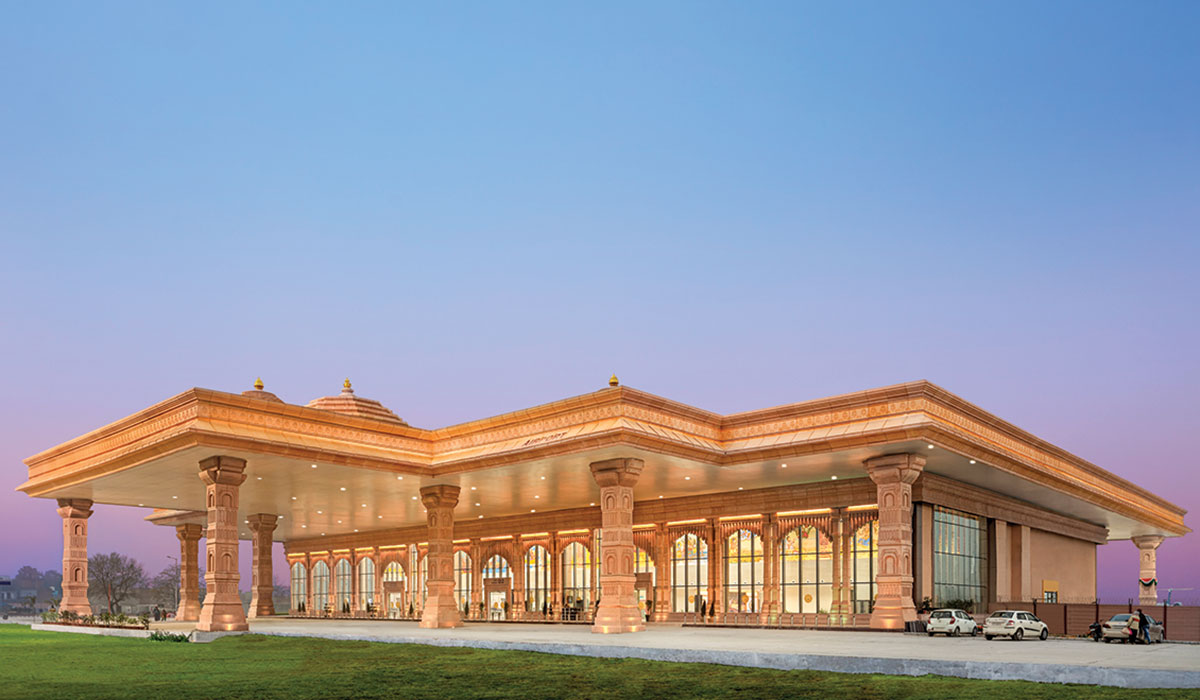
Anticipating a surge in tourism, the Ayodhya Airport’s passenger terminal accommodates 150 arrivals and departures simultaneously. It has over 100 aircraft with a peak-hour capacity of 750+ passengers. It is designed to further develop Ayodhya as one of the world’s largest pilgrimage centers, providing seamless connectivity and making the journey to Ayodhya more accessible and enriching for pilgrims.
It serves as a catalyst for economic growth in the region. Projections indicate the creation of at least 500 jobs annually, offering tangible benefits to the local community, fostering sustainable livelihoods, and empowering the region with economic opportunities.



